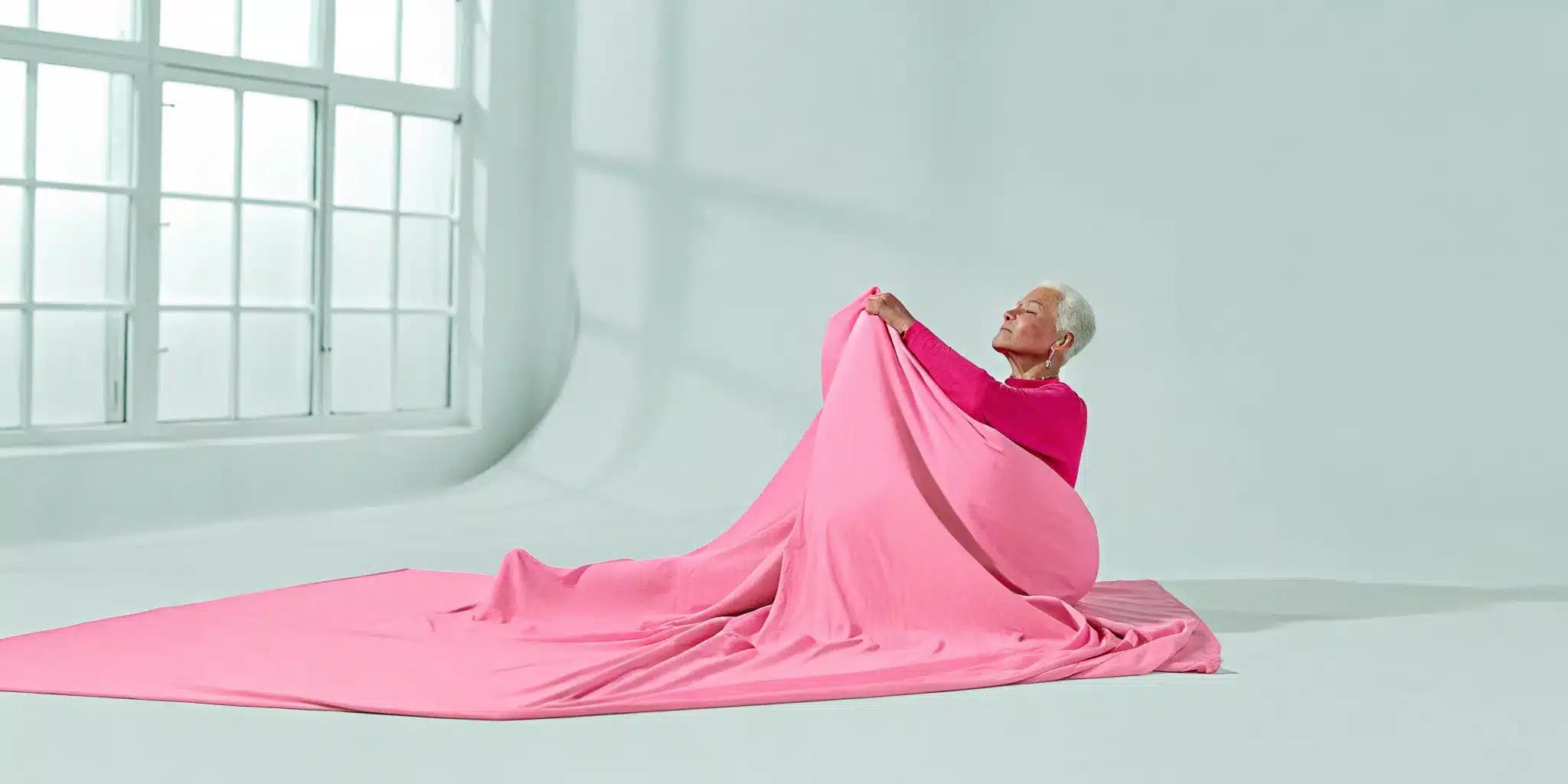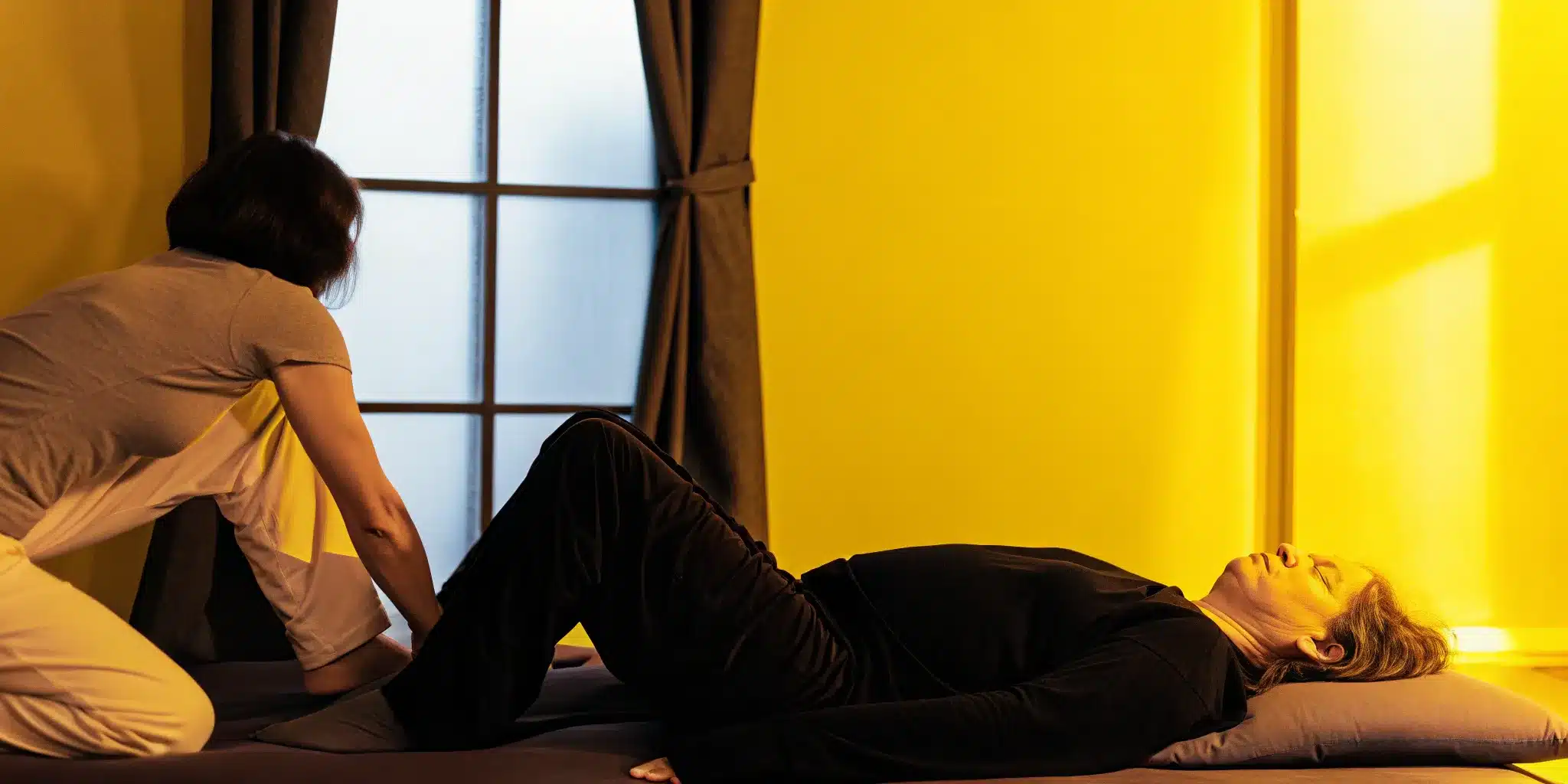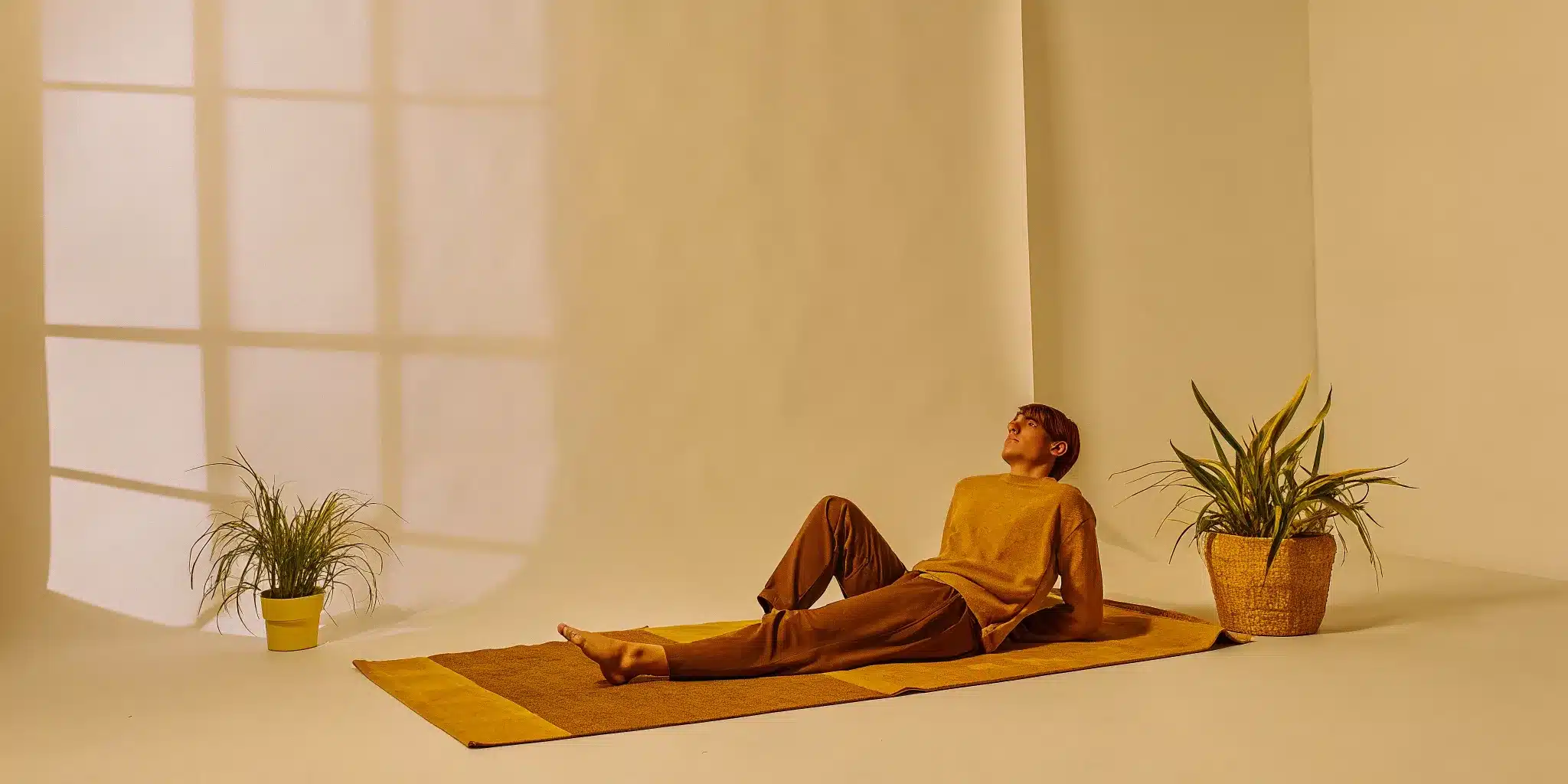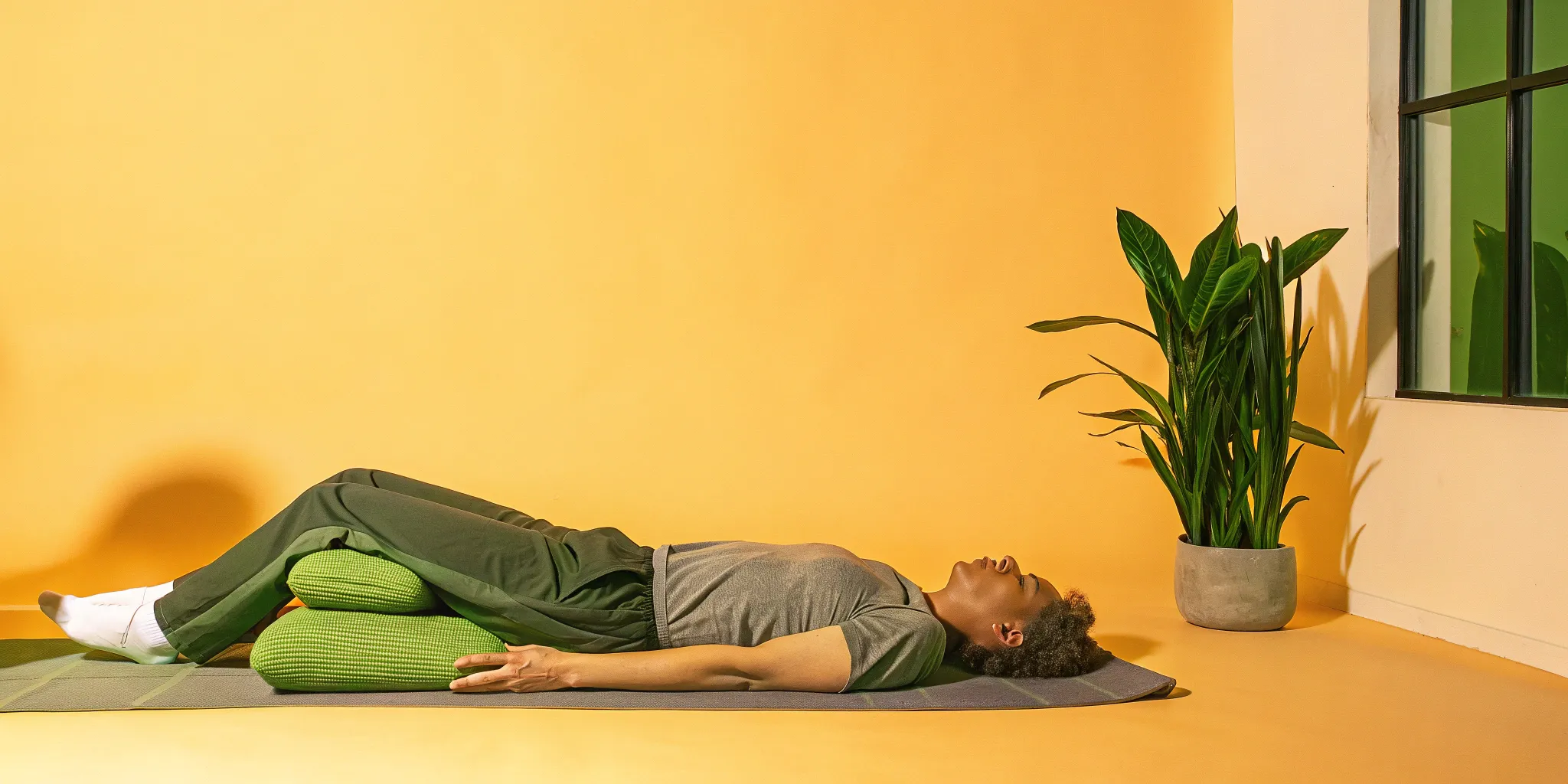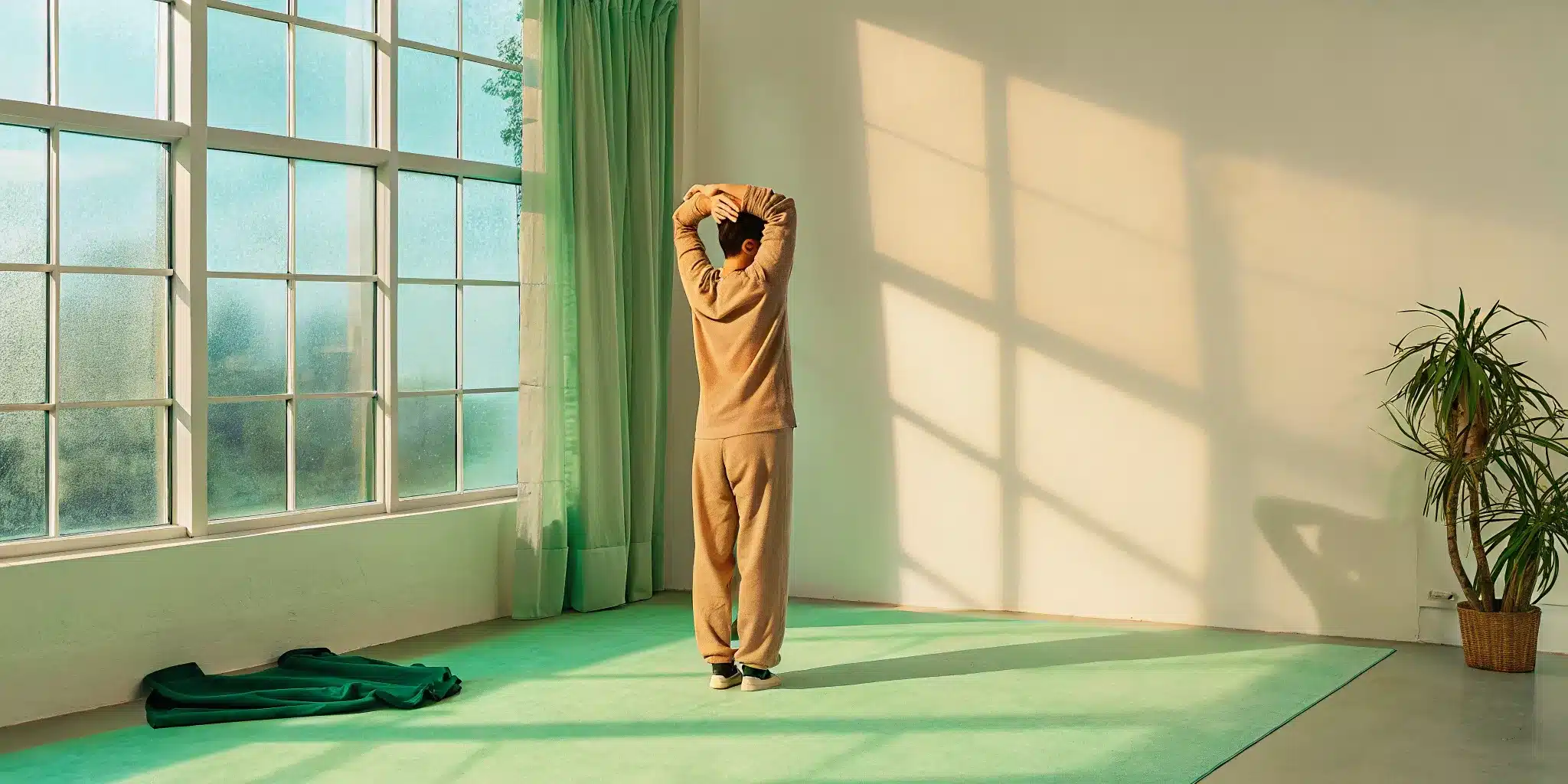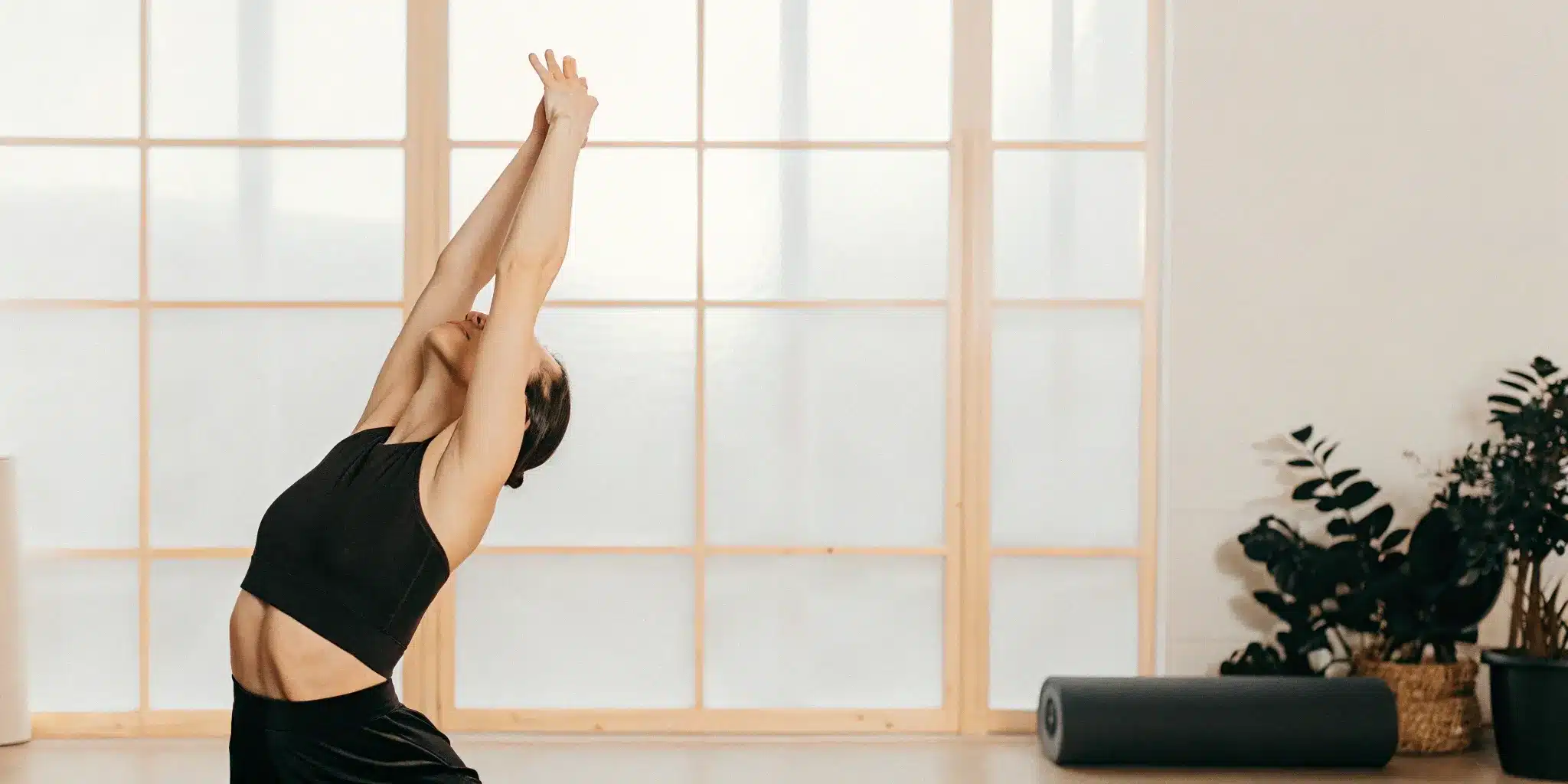Let’s be clear: you don’t have to settle for a life with limited movement and chronic pain. While your body does change over the years, you have the power to maintain your strength, balance, and flexibility. This isn’t about starting an intense workout regimen; it’s about learning to work with your body through gentle, consistent motion. Think of this as your personal guide on how to improve mobility after 60. We will walk you through simple exercises, smart habits, and the support systems that can help you stay active, independent, and ready to enjoy all the things you love to do.
Key Takeaways
- You have more control over mobility than you think: Much of the stiffness that comes with age is a result of moving less, not just the passing of time. You can actively improve your range of motion by reintroducing gentle, consistent movement into your life.
- A well-rounded routine is most effective: The best approach isn’t just about stretching. It’s a blend of exercises that build practical strength for daily tasks, improve your balance to prevent falls, and include low-impact cardio for overall health.
- Prioritize consistency and safety over intensity: Start by talking to your doctor, and always listen to your body—never push through sharp pain. The goal is to build a sustainable habit by weaving small, enjoyable activities into your daily schedule.
Why Does Mobility Change After 60?
If you’ve noticed it’s a little harder to bend down, reach for something on a high shelf, or get up from a chair, you’re not alone. As we get older, it’s common to feel less flexible. This often happens simply because we tend to move less, which can lead to tighter muscles and tissues. But this isn’t a change you just have to live with. Understanding why your mobility is changing is the first step toward taking control and moving with more freedom and less pain.
What Causes a Decrease in Mobility?
The main culprits behind decreased mobility are often stiffness in your muscles and joints. When you don’t move and stretch regularly, your muscles can shorten and tighten. This stiffness can also cause pain, especially in your lower back if your leg muscles are too tight. It creates a cycle: stiffness leads to discomfort, which makes you want to move less, leading to more stiffness. This is why health experts agree that older adults should aim to be active every day. Consistent, gentle movement helps keep your muscles pliable and your joints lubricated, making it easier to go about your day without aches and pains.
How Limited Mobility Can Affect Your Day
Limited mobility isn’t just about feeling stiff; it can impact your daily life in significant ways. Simple tasks like tying your shoes, carrying groceries, or playing with grandkids can become challenging. Good flexibility helps you move better and prevents injuries like muscle strains and backaches. More importantly, it plays a huge role in maintaining your balance and stability. Falls are a serious concern for older adults, and while you can’t prevent every accident, exercises that improve your strength and balance can significantly lower your risk. Staying mobile is key to staying independent and enjoying your favorite activities safely.
Signs It’s Time to Focus on Mobility
So, how do you know it’s time to make mobility a priority? The signs are often subtle at first. You might notice new aches after sitting for a while, difficulty with your balance, or a general feeling of tightness. If you haven’t exercised in a while or have existing health conditions, it’s always a good idea to talk to a doctor first before starting a new routine. As you begin to stretch and move, listen to your body. It’s normal to feel a little discomfort during a stretch, but you should never feel pain. As experts advise, if it hurts, you should stop. Your goal is to gently encourage flexibility, not force it.
How Your Body Changes (And How Exercise Can Help)
If you’ve noticed that bending down to tie your shoes feels a little harder than it used to, you’re not alone. It’s common to feel your body changing as you get older, but that doesn’t mean you have to accept stiffness and aches as your new normal. Many of the changes that affect your mobility are directly related to how much you move.
The great news is that you have a lot of power to influence how you feel. Understanding what’s happening inside your body is the first step toward taking control of your movement and staying active for years to come. With the right approach, you can not only slow down these changes but also reverse some of them. Exercise is your most powerful tool for maintaining your independence, preventing pain, and feeling strong and capable in your daily life. Let’s look at what’s going on and how simple, consistent movement can make all the difference.
Physical Changes That Affect Movement
As the years go by, you might notice that your muscles and joints feel tighter. This happens because our connective tissues, like ligaments and tendons, can naturally lose some of their elasticity. Think of it like a rubber band that’s been sitting in a drawer for a while—it’s just not as stretchy as it once was. This process is often accelerated by a decrease in activity. When we move less, our muscles and tissues can shorten and tighten, which is why you might feel stiff after sitting for a long time. The key takeaway is that much of this reduced flexibility comes from a simple lack of movement, which is something you can absolutely change.
The Reason Flexibility Declines with Age
A loss of flexibility isn’t just about being unable to touch your toes; it can have a real impact on your quality of life. That feeling of stiffness can lead to chronic pain and discomfort. For example, tight hamstrings and hip flexors are a common cause of nagging lower back pain. When your muscles are too tight, they pull on your joints and can throw your body out of alignment. The good news is that this decline isn’t permanent. Research consistently shows that you can regain flexibility at any age with a consistent stretching and exercise routine. It’s never too late to start moving more freely.
The Role of Exercise in Staying Mobile
Regular exercise is the single most effective way to combat age-related stiffness and maintain your mobility. When you move your body, you’re actively preventing the decline that can lead to joint pain and swelling. Being flexible helps you move with greater ease and significantly reduces your risk of injuries like muscle strains, shoulder problems, and backaches. Beyond just helping you move better, staying active is crucial for your overall health. The NHS recommends that older adults aim for some form of physical activity every day to lower the risk of heart disease and stroke. Think of exercise as an investment in your long-term independence and well-being.
Essential Exercises to Help You Move Freely
Getting back to moving with ease is all about incorporating the right kinds of activities into your routine. It’s not about intense, grueling workouts, but rather a consistent focus on exercises that support your body’s needs. A well-rounded approach that includes balance, strength, flexibility, and gentle cardio can make a world of difference in how you feel every day. These exercises are designed to help you build a strong foundation for better mobility, so you can continue doing the things you love with confidence and less discomfort.
Improve Your Balance
Good balance is your best defense against falls and a key component of confident movement. As we get older, practicing balance becomes even more important for staying steady on our feet. Simple exercises can significantly improve your stability, making everyday activities like walking on uneven ground or reaching for something on a high shelf feel safer. For example, try standing on one foot while holding onto a sturdy chair or counter for support. Johns Hopkins Medicine recommends doing balance and strength exercises with someone nearby, especially when you’re just starting out, to ensure you stay safe while you build your confidence.
Build Functional Strength
Functional strength isn’t about lifting heavy weights; it’s about having the muscle to handle daily tasks with ease. Think about carrying groceries, getting up from a comfortable chair, or playing with your grandkids. These movements all require a certain level of strength. The NHS suggests that older adults should do activities that improve strength, balance, and flexibility at least two days a week. Simple bodyweight exercises like squats (using a chair for support) or wall push-ups can build the practical strength you need for a more active, independent life.
Stretch for Better Flexibility
Flexibility is what allows your body to move through its full range of motion without pain or stiffness. When your muscles are pliable, you’re less likely to experience strains, shoulder issues, or backaches. Regular stretching is one of the most effective ways to maintain and improve your flexibility. Research shows that static stretching can help improve spinal movement and walking ability. For the best results, try holding gentle stretches for up to 60 seconds. This gives your muscles time to relax and lengthen, which is crucial for preventing injuries and moving more freely.
Get Moving with Low-Impact Cardio
Cardiovascular exercise is essential for heart health, endurance, and even your mood. But you don’t need to run a marathon to reap the benefits. Low-impact activities like walking, swimming, water aerobics, or cycling are fantastic for getting your heart rate up without putting stress on your joints. Even a brisk 20-30 minute walk most days of the week can improve your circulation, support your mobility, and give you more energy. The key is to find an activity you genuinely enjoy, as that makes it much easier to stick with it for the long haul.
Try These Simple Chair Exercises
If you’re concerned about stability or just starting your fitness journey, chair exercises are a safe and highly effective option. They allow you to build strength and improve mobility from a secure, seated position. One of the best is the sit-to-stand exercise. Simply sit tall at the edge of a sturdy chair, feet flat on the floor. Without using your hands, press through your feet to stand up straight, then slowly lower yourself back down. This single movement builds leg strength, improves balance, and mimics a fundamental daily motion, making it incredibly practical.
How to Start Your New Routine Safely
Jumping into a new fitness routine is exciting, but it’s important to approach it with care to prevent injuries and build a sustainable habit. The goal is to feel better, not to push yourself into pain or burnout. Think of this as laying a strong foundation for your mobility journey. By taking a few simple precautions, you can ensure your new activities are both effective and enjoyable. It’s all about starting smart, listening to your body, and building momentum at a pace that feels right for you. This approach helps you stay consistent and makes movement a positive part of your life, rather than a chore you dread. Many people get discouraged when they try to do too much, too soon. Instead, we’re going to focus on a gradual, mindful start. This section will guide you through the essential safety checks and principles to keep in mind. From checking in with your doctor to learning your body’s unique signals, these steps will help you move with confidence and create a routine that truly supports your long-term well-being.
Check In With Your Doctor First
Before you start any new exercise plan, the most important first step is to have a conversation with your doctor. This is especially true if you have any existing health conditions or haven’t been very active lately. Your doctor knows your health history and can provide personalized advice on what types of activities are safest and most beneficial for you. They can help you understand any limitations you might have and give you the green light to move forward with confidence. Think of it as getting a personalized roadmap for your fitness journey, ensuring you’re on the right path from the very beginning.
Simple Rules for Safe Movement
One of the simplest yet most crucial rules of any new routine is to understand the difference between discomfort and pain. It’s normal to feel a gentle pulling sensation when you stretch or a bit of muscle fatigue when you exercise. However, you should never feel sharp, stabbing, or sudden pain. If you do, that’s your body’s signal to stop immediately. Pushing through pain is a fast track to getting hurt. Honoring this boundary is key to letting your body adapt safely and helping you prevent injuries that could set you back.
How Often (and How Long) Should You Exercise?
A great target to aim for is at least 150 minutes of moderate-intensity activity each week. That might sound like a big number, but you can break it down into smaller, more manageable chunks. That’s just 30 minutes a day, five days a week. You could even split it into two 15-minute walks. Moderate activity is anything that gets your heart rate up, like a brisk walk, swimming, or a bike ride. The physical activity guidelines are flexible, so find a schedule that fits your life and makes movement feel achievable, not overwhelming.
Listen to Your Body: What to Watch For
Your body is constantly communicating with you, especially when you’re trying new movements. Learning to listen to its signals is one of the most valuable skills you can develop. When you’re stretching or exercising, apply gentle pressure and be mindful of how you feel. Don’t force any movement that feels wrong or causes strain. If you feel dizzy, short of breath, or experience any unusual discomfort, it’s time to take a break. When you pay attention to your body’s signals, you learn your limits and can work within them to get stronger safely.
Helpful Equipment and Support Tools
You don’t need a lot of fancy equipment to improve your mobility, but a few simple tools can be incredibly helpful. Resistance bands, light weights, or even a sturdy chair for support can make exercises more effective and accessible. If you have concerns about your balance, it’s a good idea to talk with your doctor or a physical therapist. They can recommend specific support tools or modifications to help you perform balance and strength exercises safely. The right support can give you the confidence to try new things and stay consistent with your routine.
Finding the Right Support for Your Goals
Starting a new fitness routine can feel a little intimidating, but you don’t have to figure it all out on your own. Finding the right support system is one of the best things you can do to stay safe, remain consistent, and see real progress. The right guidance can make all the difference between an exercise plan that fizzles out and one that becomes a life-changing habit.
Support comes in many forms. It might be a professional who can design a program just for you, a specific type of exercise that targets your unique needs, or even just the right environment that makes you feel comfortable and motivated. When you have a team—whether it’s one person or a whole community—cheering you on, you’re much more likely to stick with your goals. Let’s explore some of the best ways to get the support you need to improve your mobility and feel your best.
Who Can Help You Improve Mobility?
When you’re ready to improve your mobility, it’s smart to connect with a professional who understands how the body changes over time. A physical therapist can help you recover from an injury or manage chronic pain, while a certified personal trainer can create a well-rounded fitness plan. Look for experts who specialize in senior fitness, as they have the knowledge to help you build strength and flexibility safely. A stretch therapist is another fantastic resource, offering hands-on assistance to release tight muscles and improve your range of motion. These professionals can help you move past the myth that aches and stiffness are just a part of getting older.
The Power of One-on-One Assisted Stretching
One-on-one assisted stretching is a game-changer for anyone looking to move more freely. Unlike stretching on your own, an assisted stretching session with a trained professional allows you to achieve a deeper, more effective stretch in a safe and controlled way. Your stretch therapist can isolate specific muscles, help you relax into each position, and ensure you’re using the correct form to prevent injury. This personalized approach is perfect for targeting stubborn areas of tightness, easing joint pain, and making daily movements—like reaching for something on a high shelf or bending down to tie your shoes—feel so much easier.
How to Choose the Right Program for You
The best mobility program is the one you’ll actually stick with, so it’s important to find something you genuinely enjoy. Before you commit, think about what you want to achieve. Do you want to have more energy to play with your grandkids? Or maybe you want to get back to gardening without your back aching. Your personal goals will help guide your choices. It’s a common misconception that you have to slow down as you age, but the truth is that older adults can and should stay active. Look for programs that feel encouraging and are tailored to your current fitness level.
Deciding Between a Studio and Home Exercise
Should you work out at home or join a studio? There are benefits to both, and the right choice depends on your personality and lifestyle. Exercising at home is convenient, private, and budget-friendly. You can move at your own pace without feeling self-conscious. On the other hand, a studio provides access to specialized equipment, expert guidance, and a sense of community that can be incredibly motivating. Many people find that the accountability of a scheduled class or session helps them stay on track. You can always try a mix of both to see what works best for you.
Weave Mobility Into Your Daily Routine
Improving your mobility doesn’t have to mean spending hours at the gym. The most effective changes often come from small, consistent habits you build into your everyday life. By finding simple ways to move more from morning to night, you can create a sustainable routine that keeps you feeling flexible, strong, and ready for whatever the day brings. Think of it as sprinkling moments of movement throughout your day, rather than trying to fit in one big workout. These small actions add up, helping you maintain your independence and move with greater ease and less pain.
Start Your Day with Gentle Movement
How you begin your morning can set the tone for the rest of your day. Instead of jumping right out of bed, take a few minutes to wake up your body with some gentle stretches. This simple practice can help ease morning stiffness and prepare your muscles for daily activities. Good flexibility helps you move easily when you need to bend down to tie your shoes or reach for something on a high shelf. Try simple movements like pointing and flexing your ankles, gently turning your head from side to side, or bringing your knees to your chest one at a time. It’s a calm, quiet way to check in with your body and start your day feeling more limber.
Simple Ways to Stay Active All Day
Staying active doesn’t always mean a formal workout. The key is to reduce the amount of time you spend sitting and find creative ways to move more often. The goal is to do some kind of physical activity every day, even if it’s just light movement. You could march in place during television commercials, take the stairs when possible, or do some gentle shoulder rolls while you’re on the phone. Activities like gardening, dancing, or trying a beginner’s Tai Chi class are also fantastic ways to stay active and have fun. These small bursts of activity keep your joints lubricated and your muscles engaged, making a big difference in your overall mobility.
Wind Down with Evening Stretches
Just as you warm up your body in the morning, it’s helpful to cool it down in the evening. A few minutes of stretching before bed can release the tension that’s built up in your muscles throughout the day, helping you relax and even sleep better. Focus on static stretches, where you hold a position for a short period. This type of stretching is great for improving flexibility and can help with things like spinal movement and walking. Try a gentle hamstring stretch while sitting on the floor or a simple calf stretch against a wall. The key is to hold each stretch for about 15 to 30 seconds without bouncing, repeating it two to four times.
Easy Habits for Lasting Mobility
The secret to long-term mobility is consistency. It’s about making movement a natural part of your life, not a chore. The first step is often the simplest: just find ways to move more every day in ways you genuinely enjoy. Whether it’s walking in a park, gardening, or playing with your grandkids, choosing activities you love makes it easier to stick with them. And always remember to listen to your body. While it’s normal to feel a gentle pull during a stretch, you should never feel sharp pain. If something hurts, ease up or stop. Building these easy, mindful habits will support your mobility for years to come.
Make Your Exercise Routine a Habit
Starting a new exercise routine is one thing; making it a part of your life is another. The key is consistency, not intensity. Turning movement into a habit means it becomes as natural as brewing your morning coffee. It’s about creating a rhythm that your body and mind can count on. Forget the “all or nothing” mindset. Instead, focus on small, steady steps that build on each other over time. This approach makes your new routine feel less like a chore and more like a rewarding act of self-care that you look forward to each day.
Set Goals You Can Actually Reach
The best way to stick with a plan is to make sure your goals are easy to reach from the start. If you aim too high, too soon, you risk burnout and frustration. Instead of vowing to exercise for an hour every day, start with something more manageable, like a 15-minute walk after lunch or a 10-minute stretching session before bed. These small wins build confidence and create momentum. The National Institute on Aging suggests focusing on short-term goals that lead to a long-term vision. For example, your goal could be to touch your toes, and your plan is to stretch your hamstrings for five minutes daily. Once you achieve that, you can set a new goal.
How to Track Your Progress
Keeping a record of your efforts can be a powerful motivator. You might not see big changes right away, but consistency is key. Over time, you’ll begin to feel less stiff, and daily activities will become easier. A simple notebook or a calendar is all you need to keep a fitness journal. Each day, jot down what activity you did, for how long, and how you felt. Did you notice you could reach a little further during a stretch? Or that you weren’t as winded walking up the stairs? Celebrating these small improvements helps you see how far you’ve come and keeps you focused on your journey toward better mobility.
Stay Motivated When It Gets Tough
Everyone has days when they don’t feel like exercising. That’s completely normal. The trick is to have a few strategies ready for when your motivation dips. You could find a friend to walk with, create an energizing playlist, or simply remind yourself how good you feel after you move your body. It’s also important to listen to your body. While it’s normal to feel a little discomfort during a stretch, you should never feel sharp pain. If something hurts, stop and reassess. Being kind to yourself is part of the process. If you miss a day, don’t worry about it—just get back to your routine the next day.
Adjust Your Routine as You Go
Your exercise plan shouldn’t be rigid. As you get stronger and more flexible, your needs will change, and your routine should evolve too. Pay attention to how your body responds. You might find that certain stretches feel particularly good, so you decide to do them more often. Research shows that older adults may get better results by holding static stretches for up to 60 seconds. Feel free to modify your exercises to match your energy levels and abilities on any given day. Working with a professional, like one of our stretch therapists, can also provide personalized guidance to help you safely and effectively adapt your routine as you progress.
Staying Mobile for the Long Haul
Committing to a new movement routine is a huge step, and the real magic happens when you stick with it. Staying active for the long haul isn’t about grueling workouts or pushing through pain. It’s about building a sustainable relationship with movement that supports your body for years to come. This means understanding the facts, finding ways around challenges, and creating habits that feel good. By shifting your mindset from short-term fixes to long-term wellness, you can make mobility a natural and enjoyable part of your life. Let’s look at how you can clear away some common misconceptions and build a routine that lasts.
Common Myths About Exercise and Aging
One of the biggest hurdles to getting started is the belief that it’s simply too late. You might have heard that aches and pains are an inevitable part of aging, or that exercise won’t make a difference after a certain age. That’s simply not true. In fact, studies consistently show that regular, gentle exercise can significantly improve strength and balance at any age. The idea that you’re “past your prime” for physical activity is a myth. Your body is incredibly adaptable, and starting a routine now can help you feel stronger, more stable, and more confident in your movements, regardless of the year you were born.
How to Overcome Common Hurdles
Living with stiff joints or a chronic condition can make the idea of exercise feel daunting. It’s easy to worry that movement will make things worse, but often, the opposite is true. The key is finding the right kind of movement. Low-impact activities and targeted stretching can actually help manage symptoms and improve your overall quality of life. Gentle exercise helps lubricate your joints, reduce stiffness, and build supporting muscles. Far from hurting your joints, a consistent fitness routine can be one of the best ways to prevent or delay a decline in mobility and keep you doing the things you love with less pain.
Turn Exercise Into a Part of Your Life
For a routine to stick, it needs to fit into your life. You don’t need to become a gym fanatic overnight. Instead, focus on weaving movement into your daily and weekly schedule. Start by finding an activity you genuinely enjoy, whether it’s walking in a park, gardening, or attending a stretching session. Schedule these activities in your calendar just like you would a doctor’s appointment. The goal is to make movement a non-negotiable part of your day. While you can’t control every aspect of aging, you can absolutely take steps to stay healthy, and making exercise a regular habit is one of the most powerful choices you can make.
Don’t Forget to Celebrate Your Wins
Progress isn’t always measured by miles run or weights lifted. Sometimes, it’s about the small, meaningful improvements in your daily life. Did you reach for something on the top shelf without a twinge? Or get up from a chair with more ease? These are huge victories, and they deserve to be celebrated. Acknowledging your progress, no matter how small it seems, helps reinforce your new habits and keeps you motivated. Keep a simple journal to jot down these moments. Looking back on how far you’ve come is a powerful reminder that your efforts are paying off and will encourage you to keep moving forward on your mobility journey.
Related Articles
- STRETCHMED – Committed To Helping You Move Well
- StretchMED Annapolis – STRETCHMED
- StretchMED Kent Island – STRETCHMED
- StretchMed Medford – STRETCHMED
- StretchMed Rogers, CA – COMING SOON! – STRETCHMED
Frequently Asked Questions
I feel so stiff. Is it really possible to regain flexibility after 60? Absolutely. It’s a common myth that stiffness is a permanent part of getting older. Much of the tightness you feel comes from moving less over time, which allows muscles and connective tissues to shorten. The great news is that your body is incredibly adaptable. With a consistent and gentle stretching routine, you can absolutely lengthen those tissues and regain a significant amount of flexibility at any age.
How do I know if I’m stretching too hard? What’s the difference between a good stretch and pain? This is such an important question. A proper stretch should feel like a gentle, pulling tension in the muscle you’re targeting. You might feel some mild discomfort, but it should never be sharp, stabbing, or radiating. Pain is your body’s signal to stop immediately. The goal is to coax your muscles into relaxing and lengthening, not to force them. If you find yourself gritting your teeth or holding your breath, you’re pushing too hard.
How soon can I expect to feel a difference after starting a new mobility routine? While everyone’s body is different, you’ll likely notice small improvements quite quickly. Many people report feeling less morning stiffness or a bit more ease in their daily movements within the first couple of weeks. More significant gains in your range of motion and overall flexibility take time and consistency, often becoming more noticeable after a month or two. Think of it as a long-term investment in feeling good.
What if I have a chronic condition like arthritis or back pain? Is it still safe for me to stretch and exercise? It’s essential to talk with your doctor before starting any new routine, especially if you have a chronic condition. That said, the right kind of movement is often one of the best things you can do to manage symptoms. Gentle, low-impact exercises and targeted stretching can help lubricate joints, reduce pain, and strengthen the muscles that support your body. The key is to choose activities that feel good and avoid anything that causes pain.
Is stretching by myself at home enough, or is there a benefit to getting professional help? Stretching on your own is a fantastic habit for daily maintenance. However, working with a professional, like a stretch therapist, can take your progress to the next level. In a one-on-one session, a therapist can help you safely achieve a deeper stretch than you could on your own. They can also isolate specific muscles that are causing you trouble and ensure your form is correct, which helps you get better results and prevent injury.

